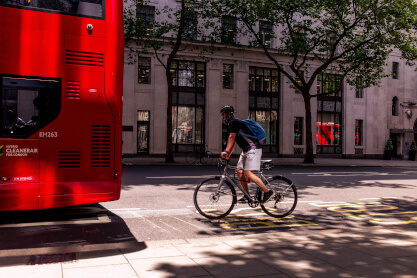
As of the 29th January this year, The Highway Code has been updated to increase the safety of pedestrians, cyclists and horse riders. The changes came into play following a public consultation that received over 20,000 responses from members of the public, businesses and organisations. Of the 20,000 responses, the majority were in favour of the updated rules. In total, eight changes have been made, and we will run through those which may affect you whilst driving on the road.
The hierarchy of road users
The first change was made to the introductory section of The Highway Code, introducing an adjustment to the hierarchy of road users. The hierarchy places road users most at risk in the event of an accident at the top of a hierarchy, and this now includes pedestrians and cyclists. The change does not remove the requirement for everyone to behave responsibly whilst on the roadand remain aware of the rules and regulations.
Give way to those crossing at junctions
The update to this rule states that, when pedestrians are waiting to cross at a junction, passing traffic should slow to the stop, allowing them to. This includes those driving a four wheeled vehicle, as well as those driving two wheeled modes of transport, such as bicycles and motorcycles. If you approach a junction and a pedestrian is mid-way through crossing in the direction you are wishing to turn, you must wait until they are safely back on the pavement.
The position of cyclists in the road
When cycling in the road, single cyclists are now asked to ride in the centre of their lane on quieter roads, when in slow-moving traffic, or when approaching junctions. When riding to the side of the road, they should be no closer than 0.5 metres to the kerb. Groups of cyclists should remain considerate of other road users when riding and cycle 2 abreast, especially when cycling with younger cyclists. All cyclists should remain vigilant when passing a parked vehicle and allow 1 metre between themselves and the car when doing so. This will provide room for a car door to open without causing harm.
Overtaking when driving or cycling
The changes to The Highway Code state that, if it’s safe and necessary to do so, drivers are able to overtake cyclists or riders when a double white line is present, so long as they travel below 10mph. Further safe-passing rules have been updated, including leaving at least 1.5 metres of room when overtaking a cyclist at higher speeds, leaving at least 2 metres and travelling at 10mph or less when passing a horse, and allowing 2 metres when passing pedestrians, so long as your speed is low. If any of the newly stated conditions are unachievable, you should wait behind until it is possible to pass safely.
Cyclists at roundabouts
Drivers of four-wheeled vehicles should remain aware of the update in this rule that places cyclists at a priority on roundabouts. An attempt to overtake shouldn’t be made, and we should instead follow behind, ensuring that they remain safe and seen on the vulnerable road layout, as well as feel confident in their journey.
The Dutch Reach
The Dutch Reach is a new technique that has been bought into action for drivers and passengers. This technique is said to make it safer when opening your door to exit your parked vehicle. It demonstrates that, by opening your door with the opposite arm, you will be forced to look over your shoulder, observing for any passing traffic or pedestrians and preventing any injuries from arising.
Find out more about the updates to The Highway Code on the GOV website, or speak to a member of our team at Bromley Vehicle Test Centrewho will be happy to advise you on the changes. We are also available to offer advice and assistanceon the condition of your vehicle with MOTs and servicing and repairs. Give us a call on 020 8460 6666 today.
